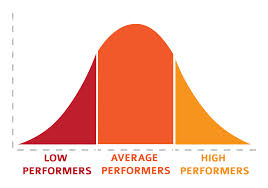by Neva Fenno, M.S.Ed. MLIS
Every year, it never fails. The last days of August go by and that tickly feeling in my stomach starts. Mine includes a little thud at the end of 20 seconds of elevated heart rate. The thud part is generally located in my mid-section. I have never seen a doctor for this phenomenon because I know it is an automatic healthy response to the coming of a new school year.
Over the years, I have developed a fail-safe to-do list that I review before I go in to the school building and tackle the job of putting my classroom back together again. Inevitably, well-meaning custodial staff have once again moved everything despite my explicit instructions not to. The floors will sparkle (careful here, they’re slippery). I’ve always wondered why they don’t mix sand in the wax; it would save many cases of sacroiliac joint dysfunction—this is a fancy medical term for “oh my aching back.” If you are smiling at this description, I have met my goal for the article.
The first day comes and goes, and not once have I experienced the cataclysmic disasters my fertile imagination produces each and every year. I don’t lose any students, the one-to-one aides are really great people and they don’t add work to my special education routine. We’re good to go.
At the top of my list are supplies (disclosure: this blog is a product of Achievement Products®, a wonderful one stop shopping site for all your classroom needs). This year, I’ve been taking a close look at allergen free products. Is it my imagination, or are kids coming to us with more violent allergies? Peanut allergies are common, and so many food products have been made in facilities where peanuts are used that it really pays to read labels carefully. Our kids have enough challenges without facing allergies in the classroom.
There are now all sorts of hypoallergenic markers, crayons, paints and glue for students to use. There are even hypoallergenic balls and other playground items. It’s going to become my practice to add the word “hypoallergenic” to every search I do for supplies no matter where I decide to shop. Better safe than sorry. And if you’re like me, the purchasing process in your district is so convoluted and difficult that you always use some of your own money to outfit your classroom.
It seems I see more and more kids with perceptual disorders. There are some thoughtful products for these kids at very reasonable prices. Here are some new arrivals for you to explore.
I’ve been adding to my collection of exercise items in the classroom. Even if I don’t have children with specific physical disabilities, I have many overweight children and students who rarely get outdoors for fresh air and exercise. It seems they are all playing video games. Video games can be good training for some children, but you must also get them up and moving.
Achievement Products has a carefully selected group of adaptive technology items for the classroom. There are also products for students with communication challenges.
So when you wake up on day one, don’t reach for Pepto-Bismol. You’re just having first day jitters—perfectly normal. I’ve put together some resources for new and experienced teachers as they face the all-important first few days of school.
Survival Guide for New (All) Teachers
Creating a Teacher Mentoring Program
Special Education Teacher Support
Add to our list of resources, help guide this blog and tell me about your challenges. I may feature your class or school in upcoming blog entries.
Grant Name: Finish Line Youth Foundation Grants
Funded By: Finish Line Youth Foundation
Description: Giving on a national basis in areas of company operations, supporting organizations involved with athletics and youth development. Special emphasis is directed toward programs designed to promote active lifestyles and team building skills; and camps designed to promote sports and active lifestyles, and serve disadvantaged and special needs kids.
Program Areas: After-School, Disabilities, Health/PE, Special Education
Eligibility: Other
Proposal Deadline: Ongoing
Annual Total Amount: $200,000.00 – $500,000.00
Average Amount: $1,000.00 – $50,000.00
Address: 3308 North Mitthoeffer Road, Indianapolis, IN 46235-2332
Telephone: 317-899-1022 x6741
E-mail: Youthfoundation@finishline.com
Website: Finish Line Youth Foundation
Availability: All States











